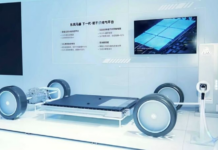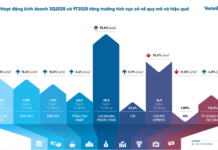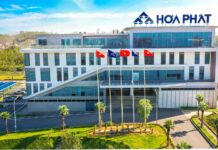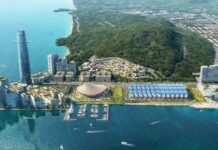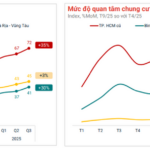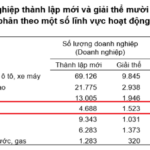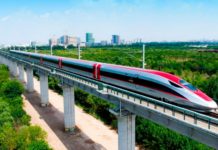On November 13th, General Secretary Tô Lâm, along with a Central Working Delegation, inspected and worked at the Long Thành International Airport Project in Đồng Nai Province. During the visit, the General Secretary received progress reports, encouraged the construction workforce, and distributed gifts to officials and workers on-site.
The delegation included key figures such as Nguyễn Văn Nên, Politburo Member and Standing Member of the Party’s 14th Congress Document Subcommittee; Trần Lưu Quang, Secretary of the Party Central Committee and Secretary of the Ho Chi Minh City Party Committee; Trần Hồng Hà, Party Central Committee Member and Deputy Prime Minister; and Vũ Hồng Thanh, Party Central Committee Member and Vice Chairman of the National Assembly. Leaders from various central ministries and agencies also joined the delegation.
Representing Đồng Nai Province were Vũ Hồng Văn, Secretary of the Provincial Party Committee and Head of the Provincial National Assembly Delegation; and Võ Tấn Đức, Deputy Secretary of the Provincial Party Committee and Chairman of the Provincial People’s Committee.
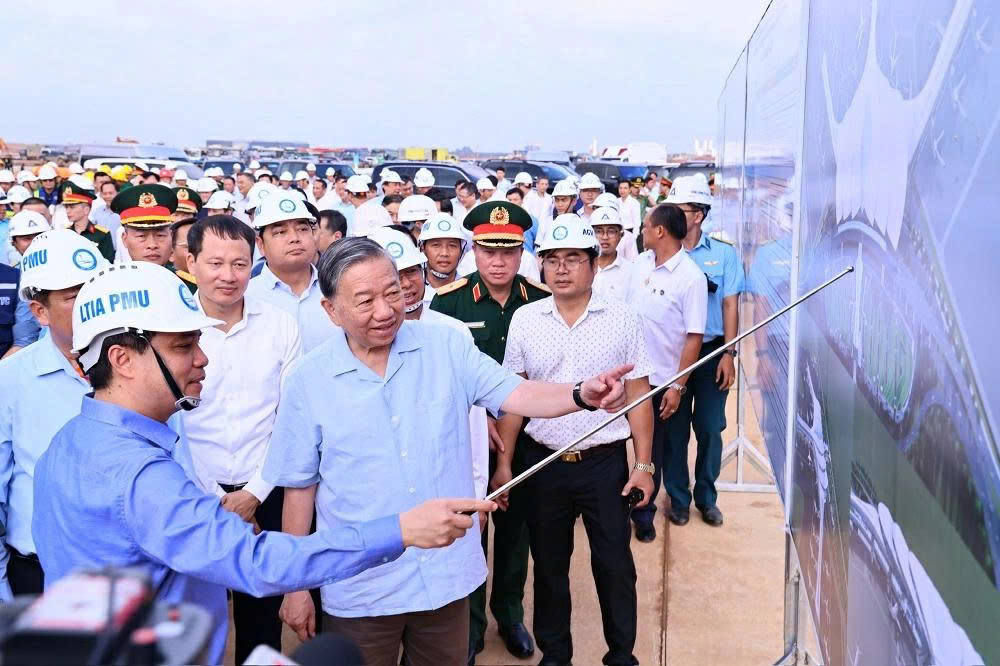
Leaders of the Airports Corporation of Vietnam (ACV) presented the progress of the Long Thành Airport Project to General Secretary Tô Lâm and the delegation. Photo: Công Nghĩa (Đồng Nai Provincial Portal)
Opening the session, General Secretary Tô Lâm stated, “Long Thành Airport symbolizes Vietnam’s development aspirations. Over time, the project has progressed well, with many components meeting deadlines.”
He emphasized, “Long Thành Airport is a national key project with significant investment and capacity. Upon completion, it is expected to position Vietnam as a leading aviation hub in the Asia-Pacific region.”
Designed as a green and smart airport, Long Thành reflects Vietnam’s vision for modern infrastructure development. It plays a crucial role in the nation’s three strategic pillars: institutions, infrastructure, and human resources. As a vital infrastructure project, it must be prioritized.
“Delays are unacceptable; every day lost is a setback for the nation,” the General Secretary stressed.
He urged agencies to address key issues, including the airport’s competitiveness on national, regional, and global scales. Learning from existing international airports, Vietnam must create a distinctive value proposition. The airport city and surrounding areas must be developed cohesively to maximize efficiency.
Additionally, the airport should embody Vietnamese identity through its architecture, smart operations, and passenger experience. With Long Thành as the focal point, surrounding areas should develop high-tech industries, tourism, and urban zones for seamless integration.
General Secretary Tô Lâm also emphasized the need for effective investment. The project must be executed with long-term vision, creating exceptional national value. Infrastructure connecting Long Thành Airport, particularly to Ho Chi Minh City, must be developed comprehensively to ensure project success. “Do it once, do it right, and meet regional standards,” he urged.
He called on relevant agencies, including the Airports Corporation of Vietnam (ACV), Ministry of Construction, and Ministry of Finance, to evaluate and quantify the project’s overall impact. Passenger satisfaction and attractiveness to international airlines should be key performance indicators.
“A modern airport succeeds when passengers want to visit, airlines want to operate, businesses want to invest, and the nation benefits,” the General Secretary concluded.
Spanning 5,000 hectares, the Long Thành Airport Project is estimated at VND 336.63 trillion (USD 16 billion). Upon Phase 1 completion, it will serve 25 million passengers and handle 1.2 million tons of cargo annually, alleviating pressure on Tân Sơn Nhất Airport and becoming a regional aviation hub.
Unlocking the Secrets: Why East Saigon Apartments Consistently Boast High Liquidity and Buyer Benefits
The strategic development of a financial hub, coupled with robust infrastructure, high-quality supply, and significant price appreciation potential, positions Eastern Ho Chi Minh City as the leading investment destination in the region, attracting substantial capital inflows.

